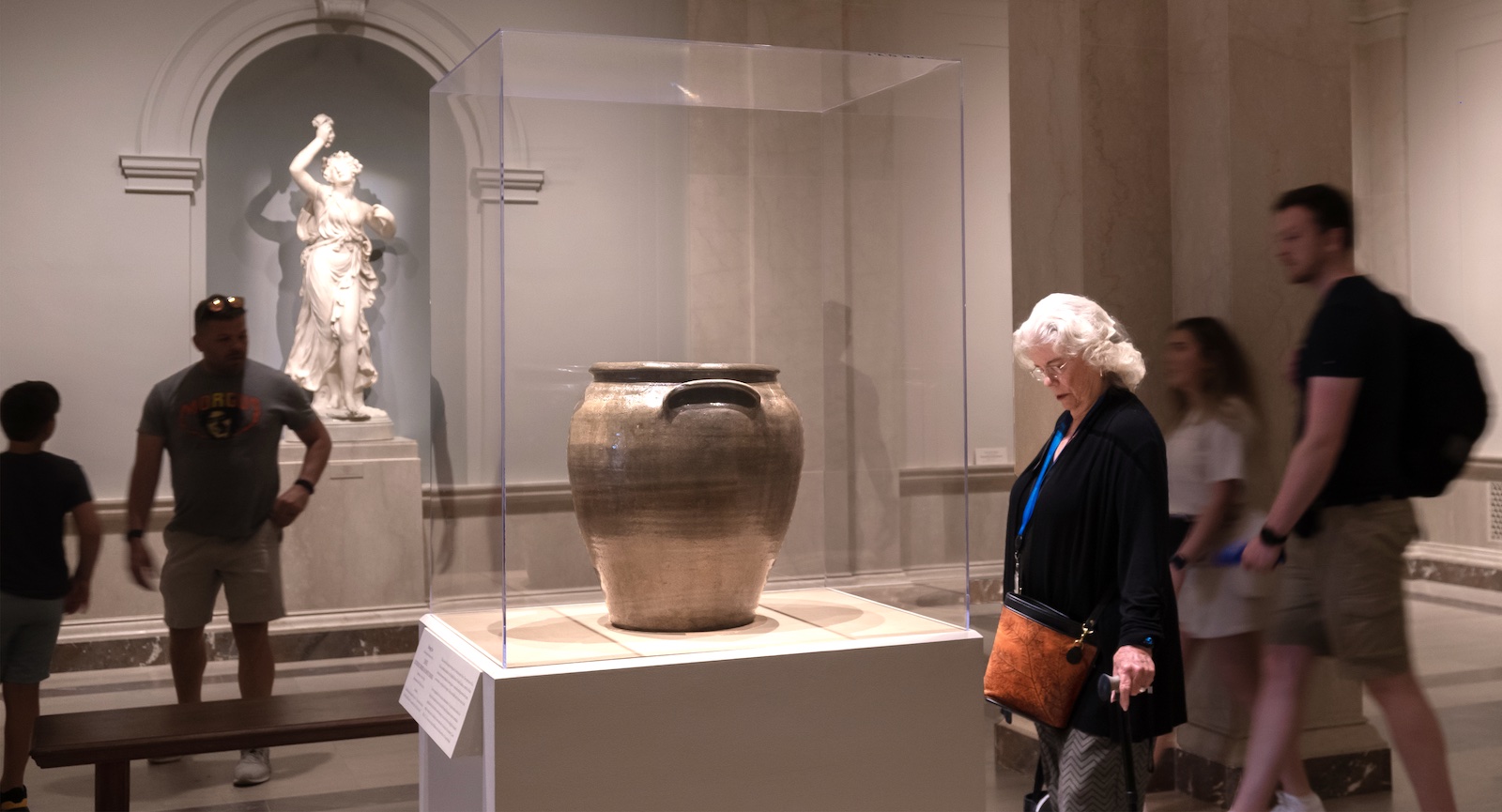Dave was both a potter and a poet. His massive storage jars and jugs are remarkable for more than just their craftsmanship. Dave was also the earliest known enslaved potter to inscribe his jars.
In the mid-1800s, literacy was illegal for enslaved people in many states. In fact, Dave’s earliest surviving jar with a signature and poem dates to 1834, which is also the year South Carolina passed a cruel law against teaching enslaved people to read or write. Writing was illegal, and Dave’s words were defiance.
Dave’s Life in Edgefield
Born around 1801, Dave (whose name would later be recorded as David Drake) lived and worked most of his life in the Edgefield district of South Carolina, a center of stoneware production. By 1820, most of the local population was enslaved and many of them worked in pottery factories. They made ceramic jars, jugs, and other vessels often used to store and prepare food.
Slaveholders Harvey Drake and Dr. Abner Landrum bought Dave at some point before 1818. Landrum owned a pottery manufactory where Dave likely began developing his craft. It may also be where Dave learned to write. He sometimes worked at Landrum’s newspaper, the Edgefield Hive.
In 1849 Lewis Miles bought Dave and put him to work at Stony Bluff Manufactory. He created most of his surviving jars at Stony Bluff, largely for use on nearby plantations. Dave would remain there until slavery was abolished in 1865. Once free he took Harvey Drake’s last name.
Over the course of his life, Dave made thousands of vessels. Today, 270 are known to survive.

David Drake, Storage Jar, 1859, alkaline-glazed stoneware, Anonymous Gift of Funds, 2023.2.1
Storage Jar
The storage jar in our collection is almost two feet tall, one of Dave’s biggest surviving works. It dates to 1859, which means Dave had been making stoneware for many decades by the time he created it.
The jar is glazed in shades of brown and olive green. Drops of glaze run all the way down its rounded sides. Two small, curved handles flare out from just under the rim. This jar probably stored meat or lard, its opening sealed with parchment and wax.
The inscription on one side reads:
L.m. march 25th 1859
Dave
1859
The letters “L.m.” refer to Lewis Miles. Dave’s signature may have appealed to those who appreciated his work. But signing his own name after the initials of his enslaver was also an understated act of resistance.
The Poem on Dave’s Jar
This is one of about 40 surviving jars that Dave not only signed and dated but also inscribed with a short poem.
Typical of Dave's work, it is a rhyming couplet:
I made this out of number, & cross ' '
if you do not lisen at the bible you’ll be lost
We don’t know exactly what this poem means. One theory is that it might be based in the tradition of embroidered samplers, with “number, & cross” referring to cross-stitch or counted-thread embroidery. Samplers served as both reference and practice for young embroiderers. By the 18th century, they regularly included alphabets and numbers, short verses, and the name of their maker—not unlike some of Dave’s poem jars.
In mentioning the cross, Dave might also be alluding to his faith and maybe to his hardship. Certainly, the second line of the poem speaks of religion directly. Dave is clear about the importance of following biblical teachings.

As Dave was inscribing this poem, it seems he accidentally left out some words or misjudged the space. He corrected his mistake by writing the words “you’ll be” under the second line and then tucking them in a swooping carat that points to their correct place.
This is one of Dave’s later poem jars. While he continued making ceramic wares after Emancipation, he appears to have stopped inscribing them. He had been using his poems to assert his identity, defying the laws designed to strip him of personhood.
“Based upon the rules of the system of slavery, at no point should we have ever known of Dave the Potter. Yet we do,” notes Phoenix Savage, a contemporary Black artist inspired by Dave’s work. “We know him. He made sure of that.”
